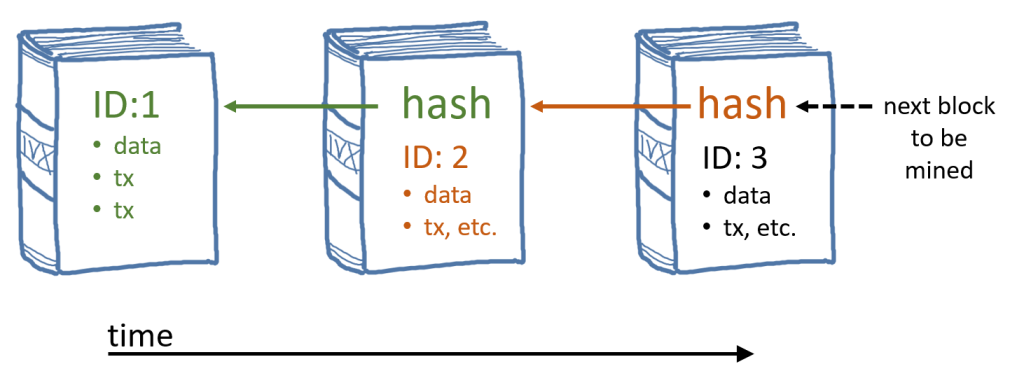A blockchain is a data structure with a unique set of properties suited to decentralized systems. The data in a blockchain is usually wrapped in a package called a block and when the network is updated with new information this block is linked to the previous update. In this manner the links form a chain that cannot be broken without invalidating the entire chain. The data is immutable meaning that once a block is written it cannot be deleted or changed. In a public blockchain this is managed by having many participants each storing a copy of the data and agreeing on any updates. These nodes keep the network decentralized—without a main server or single-point-of-failure, and transparent—open to anyone to participate and audit the activity.
Sometimes referred to as decentralized-ledger technology, or DLT, a blockchain consists of many pieces: a network protocol to communcate with other participants, a consensus mechanism to agree on the state of the ledger, a method of data storage, a transaction queue to decide what to do next, and some business logic, i.e. What can this blockchain do? Can it keep track of account balances? Can it run snippits of code (smart contracts)? Can it calculate interest payments? Can it record weather data?

Many blockchain projects are open-sourced so improvements are made by the community of developers, or copies can be made (called forks) where others can experiment and try out new features. A public and permissionless network is open to anyone to view the data and its source code; no one needs permission to access the data or run a node. An important feature of a public open network is that it is censorship-resistant and this is one of the reasons for Bitcoin’s popularity and growth. There is no pay-to-play or gatekeeper. Ideally everyone has equal access to the network.
Today there are myriad cryptocurrencies and blockchains covering the whole spectrum of attributes described here, however, all can trace their roots back to Bitcoin.






